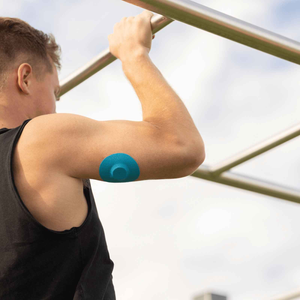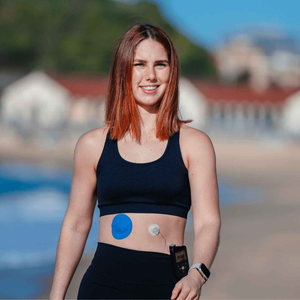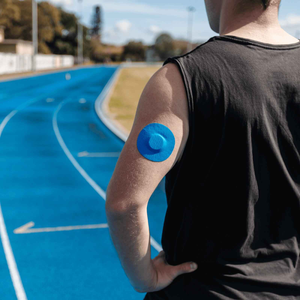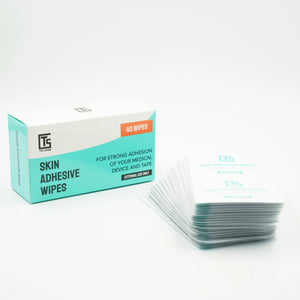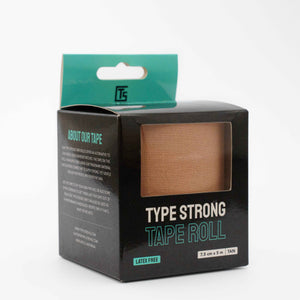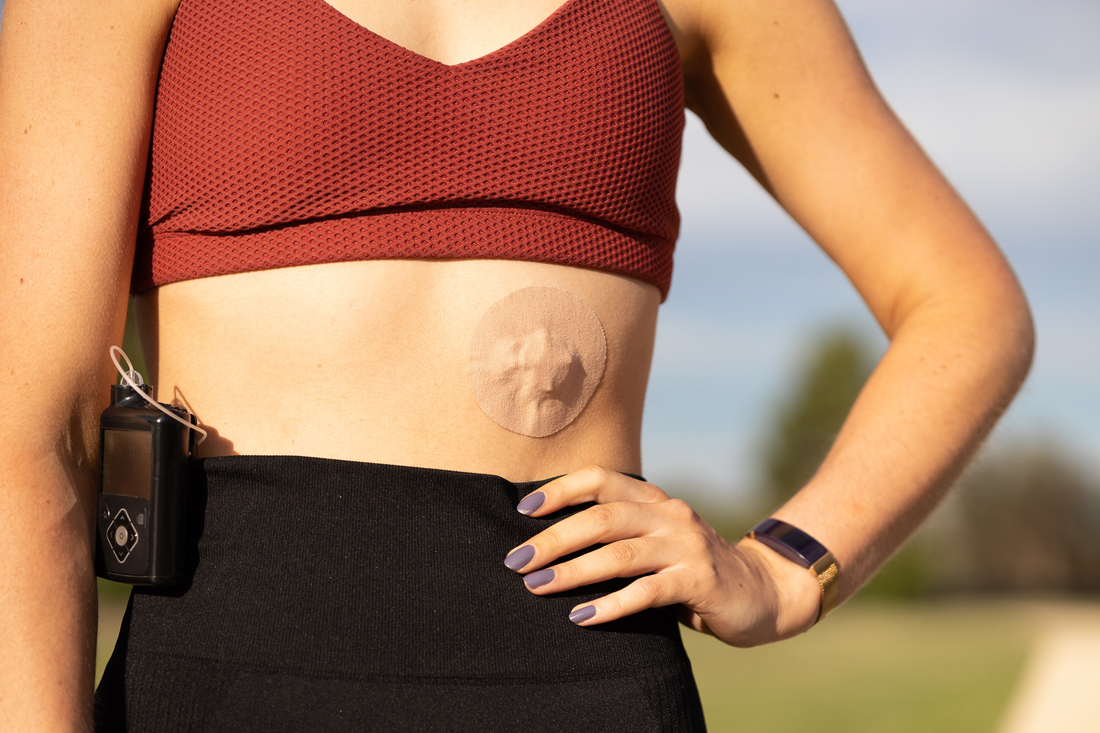In 2025, continuous glucose monitoring is smarter, smaller, and more user-friendly than ever before. But the best CGM 2025 for you isn’t just about having the latest features - it’s about how reliably it works in your day-to-day life. Accuracy, wear time, and app integration matter, but so does ensuring your device stays securely in place for the full sensor cycle.
A continuous glucose monitor is a medical device that tracks glucose in the fluid beneath your skin. The CGM patch is the adhesive cover that keeps the sensor secure, shielding it from sweat, friction, and knocks. Even the most accurate CGM 2025 can lose performance if the sensor shifts or lifts early.
In this guide, we’ll compare the top five devices, explain who each one is best for, and show how pairing your CGM with the right patch can protect your data, improve comfort, and help you get the most from every sensor. Along the way, you’ll find practical tips for proper skin prep, avoiding CGM patch reactions, and preventing patch lift-off during exercise so your readings stay consistent all year round.
How to choose the best CGM in 2025
Selecting the best CGM device 2025 means weighing both the technology and the support system that keeps it in place. Two elements work together here:
-
The CGM device – A medical tool that measures glucose in the interstitial fluid under your skin, sending readings to a compatible display device (Mayo Clinic).
- The CGM patch – A non-medical adhesive that secures the sensor, protecting it from moisture, friction, and accidental dislodging.
Core factors to compare
-
Accuracy (MARD score) – Look for the lowest possible Mean Absolute Relative Difference. The best glucose monitor 2025 should ideally have a MARD under 10%, ensuring readings are close to lab results and reducing the need for confirmatory fingersticks.
-
Wear time – Devices range from 7 to 14 days. Longer wear can reduce costs and skin irritation, but only if adhesion is maintained. Using a patch designed for your device can help you extend CGM patch wear time.
-
Calibration – Factory-calibrated devices save time and reduce hassle, while some still require occasional manual checks.
-
Integration – Certain CGMs pair directly with insulin pumps or smartwatches, streamlining diabetes management.
- Patch compatibility – A patch designed for your exact CGM model ensures the best fit and comfort. For example, Dexcom G7 patches fit differently from Libre patches.

Lifestyle considerations
-
Active users benefit from sweatproof adhesives to avoid early lift-off during workouts — an issue you can prevent with proper skin prep.
-
Hot climate users need breathable, water-resistant adhesives to maintain hold despite humidity — this is where extra summer protection can make a difference.
-
Parents of young children may prefer hypoallergenic CGM patches that last through school and play without causing irritation.
- Pump users often benefit from devices that integrate directly with their insulin pump, paired with a patch cut to fit the sensor’s shape.
Common mistake to avoid
Choosing the best continuous glucose monitor 2025 based solely on device features without considering adhesion. Even the top CGM can underperform if the patch isn’t suited to your lifestyle or if application technique is lacking. Matching the right adhesive to your device and preparing your skin properly can make the difference between smooth, uninterrupted data and frustrating early sensor failure.
Key specs to compare when buying a CGM
|
Spec |
Why it matters |
What to look for in 2025 |
|
Accuracy (MARD%) |
Lower % means readings are closer to lab results |
Under 10% for the most accurate CGM 2025 |
|
Wear time |
Fewer changes = less skin irritation |
7–14 days depending on the device |
|
Calibration |
Reduces daily maintenance if factory set |
Prefer no-calibration models for convenience |
|
App integration |
Improves tracking and alerts |
Direct pump or smartwatch connectivity |
|
Patch compatibility |
Prevents early lift-off and data loss |
Model-specific adhesive patches for security |
Why these specs matter
Finding the best CGM 2025 requires understanding how these specifications affect both your glucose data and daily comfort. Let’s break each one down.
-
Accuracy is measured by the Mean Absolute Relative Difference (MARD). This percentage shows how close your CGM readings are to laboratory results. Lower MARD = higher accuracy. If you want the most accurate CGM 2025, look for a MARD under 10%. Devices like the Dexcom G7 and Medtronic Guardian 4 have been recognised for delivering consistent, reliable readings, which can reduce the need for confirmatory fingersticks (Diabetes UK).
-
Wear time affects convenience, cost, and skin health. Longer wear — such as the 14-day lifespan of the Freestyle Libre 3 — means fewer sensor changes and less skin disruption. However, wear time depends heavily on adhesion. Even the best CGM device 2025 will fail early if the patch lifts. That’s why it’s worth learning how to extend your CGM patch wear time and match your adhesive to your device model.
-
Calibration is another factor. Some models require you to calibrate with a fingerstick, while others come factory-calibrated. For busy lifestyles, no-calibration devices like the Dexcom G7 offer a significant time-saving advantage.
-
App integration can transform your experience. A leading glucose monitor with smartwatch compatibility or direct pump pairing allows you to act on data instantly. This can be particularly useful for pump users, parents monitoring children, or those who rely on predictive alerts to prevent hypoglycaemia.
- Patch compatibility is often overlooked but essential. Generic patches may not align perfectly with your sensor, allowing sweat or water to seep in. Model-specific designs — such as Dexcom G7 patches or Omnipod 5 patches — fit snugly, supporting both comfort and data accuracy.
Pro tip: If you’re active, live in a humid climate, or plan to swim, choose patches with water-resistant adhesive. Pairing the right patch with proper skin prep can extend your sensor’s life and reduce costly replacements.
Quick comparison — the 5 best CGMs in 2025 at a glance
|
Device |
Standout features |
Typical wear time |
Patch compatibility |
|
Freestyle Libre 3 |
Ultra-slim, factory-calibrated, real-time data |
14 days |
|
|
Dexcom G6 |
Predictive alerts, app integration, proven accuracy |
10 days |
|
|
Dexcom G7 |
Smaller design, 30-min warm-up, direct-to-watch |
10 days |
|
|
Medtronic Guardian 4 |
Pump integration, predictive high/low alerts |
7 days |
|
|
Omnipod 5 |
Tubeless hybrid pump + CGM, adaptive insulin |
3 days (pod) |
Understanding the comparison
The table above gives a quick overview, but choosing the best CGM 2025 means understanding how each factor impacts your real-world use.
Freestyle Libre 3 – Ultra-slim and budget-friendly CGM choice
The Freestyle Libre 3 stands out in 2025 for its discreet size, factory calibration, and extended 14-day wear time. For many, it’s the best CGM device 2025 if you want to reduce sensor changes, simplify your routine, and keep costs manageable.
Unlike bulkier sensors, the Libre 3’s low profile sits close to the skin, making it less likely to snag on clothing or catch during daily activities. It provides real-time glucose data without fingerstick calibration, which is particularly appealing for those seeking a less invasive diabetes management option.
Who it’s best for:
- First-time CGM users looking for a straightforward, budget-conscious choice
- People who value long wear time and fewer interruptions
- Users who prefer a smaller, less visible sensor for professional or social settings
Accuracy and performance
With a competitive MARD score and reliable Bluetooth connectivity, the Libre 3 delivers data that can help reduce hypoglycaemia episodes and improve daily decision-making. However, even the most accurate CGM 2025 can underperform if the sensor shifts or lifts before the 14-day cycle ends.
Why the right patch matters
Despite its slim design, the Libre 3 is still subject to adhesion challenges — especially in warmer climates or during high-intensity activity. Sweat, friction, and water exposure can weaken its built-in adhesive. Model-specific Freestyle Libre adhesive patches provide an extra layer of stability, helping the device stay in place through exercise, swimming, or long work shifts.
Pairing the Libre 3 with proper preparation — such as thorough skin prep for patches — can extend wear time and prevent costly sensor replacements.
Lifestyle scenarios
- Active adults: Running, cycling, or gym workouts can cause sweat and clothing friction. Sweatproof Libre patches can prevent early lift-off.
- Hot climate users: High humidity can loosen adhesive faster. Consider breathable, water-resistant patches for extra summer protection.
- Parents managing children’s CGMs: Kids may bump or catch their sensor during play. Durable, hypoallergenic patches can help protect against accidental dislodging.
For users who want a balance of affordability, long wear, and minimal maintenance, the Libre 3 is a strong contender for best glucose monitor 2025. Just remember — the full 14-day potential depends on pairing it with a patch that fits correctly and suits your lifestyle needs.
Dexcom G6 – Trusted accuracy with proven performance
The Dexcom G6 continues to be one of the most recognised and reliable devices in 2025, making it a strong choice for those who want a balance of high accuracy, robust app integration, and a solid 10-day wear time. For many long-term users, it’s still the best CGM 2025 for consistent performance and trusted technology.
Why it stands out
The Dexcom G6 offers predictive high and low glucose alerts, giving you time to act before levels become critical. This is especially valuable for overnight monitoring or during physical activity when glucose can shift quickly. Its app works seamlessly with smartphones and some smartwatches, making glucose data easy to view and share with caregivers or healthcare providers.
Factory calibration means no routine fingersticks are required, saving time and reducing disruption. For many, it remains one of the most accurate CGM 2025 options, particularly for those who have been using CGMs for years and value predictable results.
Who it’s best for:
- Long-term CGM users wanting proven reliability
- People needing predictive alerts for tighter glucose control
- Active individuals who prefer a balance of comfort and strong adhesion
The role of patches
Despite its good adhesive, the Dexcom G6 can still face early lift-off in certain conditions. Activities like swimming, running, or even sleeping in warmer conditions can cause edges to peel. Model-specific Dexcom G6 adhesive patches add an extra layer of security, helping to maintain consistent readings through the full wear cycle.
If you have sensitive skin, hypoallergenic patches can help prevent irritation while still offering a secure fit. Pairing them with proper skin prep can make a noticeable difference in comfort and longevity.
Lifestyle scenarios
- Athletes and gym-goers: Sweat and movement can strain the adhesive. Durable patches designed for exercise can reduce risk of peel-off.
- Warm climate wearers: Adhesion challenges increase with humidity — consider patches proven for extra summer protection.
- Overnight stability: Some users experience edge lift during sleep, especially if they change position often. Patches with rounded edges can reduce snagging on bedding.
For many, the Dexcom G6 remains a top CGM because of its combination of accuracy, alert system, and ease of use. But to truly get the most from it, especially in active or humid conditions, pairing it with the right patch is essential for stable readings and full wear time.
Dexcom G7 – Smaller design and faster start-up
The Dexcom G7 is one of the most anticipated upgrades in 2025, delivering a more compact design, a faster 30-minute warm-up, and seamless app integration. For many, it’s the best CGM device 2025 if you value discreet wear and quick sensor activation.
Why it stands out
The G7’s smaller profile makes it less obtrusive under clothing and more comfortable for active users or those with sensitive skin. Its warm-up time is just 30 minutes — a significant improvement from the G6 — meaning less downtime between sensor changes. The device also integrates directly with compatible smartwatches, allowing real-time readings without needing to check your phone.
From a performance standpoint, the G7 maintains the accuracy users expect from Dexcom, making it a strong contender for most accurate CGM 2025 rankings. However, like all CGMs, adhesion plays a huge role in maintaining that accuracy for the full 10-day cycle.
Who it’s best for:
- Active users wanting a lighter, lower-profile sensor
- People who prefer faster warm-up times for minimal data gaps
- Wearers who value smart device integration for convenience
The role of patches
The Dexcom G7’s updated shape means not all standard patches fit correctly. Poor fit can leave edges exposed, increasing the risk of lift-off. That’s why model-specific Dexcom G7 adhesive patches are essential for keeping the sensor stable through workouts, swimming, and daily movement.
Pairing G7 patches with thorough skin prep can reduce irritation and extend wear, especially in warm or humid climates where sweat and moisture can challenge adhesion.
Lifestyle scenarios
- Sports and outdoor activity: The G7’s lightweight design is great for movement, but secure adhesion is vital during running, cycling, or team sports.
- Hot climates: Heat and humidity can shorten adhesive lifespan. Using summer-ready CGM patches can help maintain stability.
- Frequent travellers: If you change environments often, including shifts between dry and humid climates, water-resistant patches offer more consistent wear.
The Dexcom G7 is a leading glucose monitor in 2025 for users who want smaller size, faster start-up, and top-tier accuracy. Just remember — to fully benefit from its advanced features, you’ll need a patch that matches its updated design and can handle your activity level and environment.
Medtronic Guardian 4 – Pump integration and predictive alerts
The Medtronic Guardian 4 is a standout choice in 2025 for pump users, thanks to its full integration with the MiniMed 780G insulin pump system. This combination allows for automated insulin delivery adjustments based on continuous glucose readings, making it a top CGM for those seeking advanced, closed-loop technology.
Why it stands out
The Guardian 4 uses predictive high and low alerts to give you time to act before glucose levels shift into dangerous ranges. For people managing type 1 diabetes, this real-time feedback — combined with automated pump adjustments — can significantly reduce glucose variability. The device’s 7-day wear time is shorter than some competitors, but for pump users, the trade-off is worth it for the integration benefits.
From an accuracy standpoint, the Guardian 4 remains competitive, making it a strong contender for most accurate CGM 2025 status, particularly in pump-assisted therapy. However, short wear time means that adhesion loss partway through the cycle can be especially frustrating and costly.
Who it’s best for:
- Pump users wanting seamless CGM-pump integration
- Those who rely on predictive alerts for proactive glucose management
- People prioritising data-driven automation over maximum wear length
The role of patches
The Guardian 4 sensor’s built-in adhesive is designed to hold for a week, but heavy sweating, friction from clothing, or frequent water exposure can still lead to early lift-off. Using Medtronic Guardian adhesive patches adds another layer of protection, keeping the sensor firmly in place for accurate readings until replacement day.
For those with sensitive skin, hypoallergenic patches can reduce irritation, while sweatproof options are ideal for high-activity lifestyles. Pairing these with proper skin prep can help maintain adhesion through the full wear cycle.
Lifestyle scenarios
- Athletes: Intense training can lead to excess sweating and adhesive breakdown. Sweat-resistant patches help prevent data loss during peak activity.
- Hot climates: Humidity can weaken adhesive bonds. Summer-protection patches can maintain hold even in tropical conditions.
- Swimmers: Regular water exposure can soften adhesives. Water-resistant patches are essential for maintaining accuracy.
For pump users, the best CGM device 2025 might well be the Guardian 4, thanks to its automation and predictive alert features. But to ensure it works at its full potential, the right patch — chosen for your activity level and skin needs — is just as important as the device itself.
Omnipod 5 – Tubeless CGM-pump hybrid convenience
The Omnipod 5 is unique among the best CGM 2025 options because it’s more than a CGM — it’s an automated insulin delivery system that combines a tubeless pump with integrated glucose monitoring. This means you get continuous glucose tracking and insulin adjustments in one discreet, wearable pod.
Why it stands out
The Omnipod 5 automatically adjusts insulin delivery based on CGM readings, helping reduce glucose fluctuations throughout the day and night. For those who value convenience and fewer daily injections, it’s a game-changer. The tubeless design also offers greater freedom of movement compared to traditional pump setups, making it especially appealing to active users, parents managing children’s diabetes, and anyone wanting a lower-profile device.
Pods are worn for up to 3 days before replacement, and while the integrated CGM provides valuable data, the system’s performance depends heavily on keeping the pod secure and stable against the skin.
Who it’s best for:
- Users wanting a combined insulin pump and CGM in one device
- People who value tubeless, discreet wear
- Active individuals who benefit from automated insulin adjustments
The role of patches
Because the Omnipod 5 is both a pump and a sensor, it’s slightly bulkier than a standard CGM sensor. This makes it more vulnerable to knocks, especially for children or during sports. Using Omnipod adhesive patches designed to fit the pod’s shape can help keep it secure, protect the edges from peeling, and maintain stable glucose data.
Frequent pod changes mean repeated adhesive use on the skin, so choosing patches made with hypoallergenic materials can reduce irritation over time. Combining these with proper skin prep will help ensure each pod stays in place for the full 3-day wear.
Lifestyle scenarios
- Active children: Running, jumping, and play can put strain on pod adhesion. Durable patches prevent early lift-off.
- Athletes: Tubeless design is great for movement, but secure adhesion is critical during high-intensity workouts.
- Swimmers: Water-resistant patches help maintain a secure seal through repeated pool or beach sessions.
- Frequent travellers: Reliable adhesion means fewer interruptions during trips when pod changes might be less convenient.
The Omnipod 5 offers unmatched convenience for those who want a pump and CGM in one. As a leading glucose monitor with automated insulin delivery, it can make life easier - but only if the pod remains securely in place. Choosing the right patch for your activity level and skin type is essential to getting the most from this innovative system.
When weighing your options, remember that the most accurate CGM 2025 is only as good as the stability of its placement. Device specs determine potential performance, but patch quality determines whether you can actually achieve it in daily life.
Why adhesive patches matter for CGM performance
Even the best CGM 2025 is only as reliable as the stability of its placement. CGM sensors measure glucose in the interstitial fluid beneath your skin, and that accuracy depends on the sensor staying in the same position for the entire wear period. If the adhesive fails, the sensor can shift or lose contact, causing inaccurate readings, early sensor loss, and costly replacements.
Why adhesion matters for accuracy
When a sensor lifts even slightly, the small movement can disrupt the connection between the sensor filament and your skin. This micro-shift can lead to erratic readings or temporary signal loss. For those aiming to use the most accurate CGM 2025, securing the sensor properly isn’t just about comfort — it’s about data you can trust to make safe insulin or dietary decisions (NHS).
Common causes of early lift-off
- Sweat and moisture: Exercise, hot weather, or humidity can break down adhesive layers.
- Friction: Clothing rubbing against the sensor site during activity or sleep can loosen edges.
- Water exposure: Swimming, showering, or heavy rain can cause adhesive softening.
- Skin prep issues: Applying patches to oily, damp, or unclean skin reduces grip.
Seasonal considerations
- Summer: Heat, sweat, and humidity make it harder for adhesives to maintain their hold. Breathable, sweatproof patches and extra summer protection can help prevent mid-cycle lift.
- Winter: Dry air and temperature changes can lead to skin irritation under the patch. Using hypoallergenic patches and following post-adhesive skin care routines can help.
- Season transitions: Moving between climates — for example, travelling from a dry winter to a humid summer — may require switching to a more water-resistant patch design.

How to improve patch performance
- Start with proper skin prep — Clean and dry the area thoroughly before applying the patch. Avoid lotions or oils that can interfere with adhesion. See our guide on skin prep for patches for step-by-step tips.
- Match patch to device — Generic patches may not fit snugly, allowing moisture in. Always choose a patch cut for your device model, such as Dexcom G7-specific patches.
- Consider your lifestyle — Athletes, swimmers, or those in hot climates may need waterproof, sweatproof patches for reliable wear.
- Have spares on hand — Keeping extra patches ensures you can quickly replace one if it lifts early.
A CGM’s performance isn’t determined by the device alone — patch adhesion is a critical factor in accuracy, comfort, and cost efficiency. Whether you use a top CGM like the Dexcom G7, Libre 3, or Guardian 4, investing in the right patch and applying it correctly will help you get the full benefit from your technology all year round.
People also ask — Your CGM and patch questions answered
-
What is the most accurate CGM in 2025? The Dexcom G7 and Medtronic Guardian 4 are among the most accurate CGM 2025 options, both with low MARD scores under 10%. Accuracy depends on correct sensor placement, proper skin prep, and using a model-specific patch to prevent early lift-off.
-
Do I really need a patch for my CGM? Not always, but a patch can prevent sensor edges from peeling due to sweat, clothing friction, or water exposure. It also helps maintain accuracy for the full wear period. Skin prep before applying makes patches last longer.
-
Which CGM patch works best for summer? In hot or humid weather, choose breathable, sweatproof, and water-resistant patches tailored to your device model. This prevents adhesive breakdown from moisture. See our summer CGM protection tips for best results.
-
How long should a CGM patch last? A high-quality patch should last 7–10 days, matching most CGM sensor cycles. If peeling happens earlier, adjust your prep routine or try a patch designed specifically for your device’s shape.
- Can I wear a CGM patch while swimming? Yes — but use a waterproof or water-resistant patch for maximum security. Swimming, showering, and sweat can weaken adhesives, so patches made for aquatic wear can help protect readings. For tips, see our exercise and patch stability guide.
Matching the best CGM to your lifestyle
The best CGM 2025 isn’t just the one with the highest specs — it’s the one that fits your lifestyle and stays secure for its full wear time. Whether it’s the most accurate CGM 2025 like the Dexcom G7, the pump-ready Medtronic Guardian 4, or the budget-friendly Libre 3, stable adhesion is key to consistent readings.
Pair your device with proper skin prep and a model-specific patch, such as Dexcom G7 patches or Freestyle Libre patches, to avoid early lift-off.
Secure wear means better data, fewer interruptions, and more confident glucose management. Browse our CGM patch range to find your fit and keep your device working as intended.
